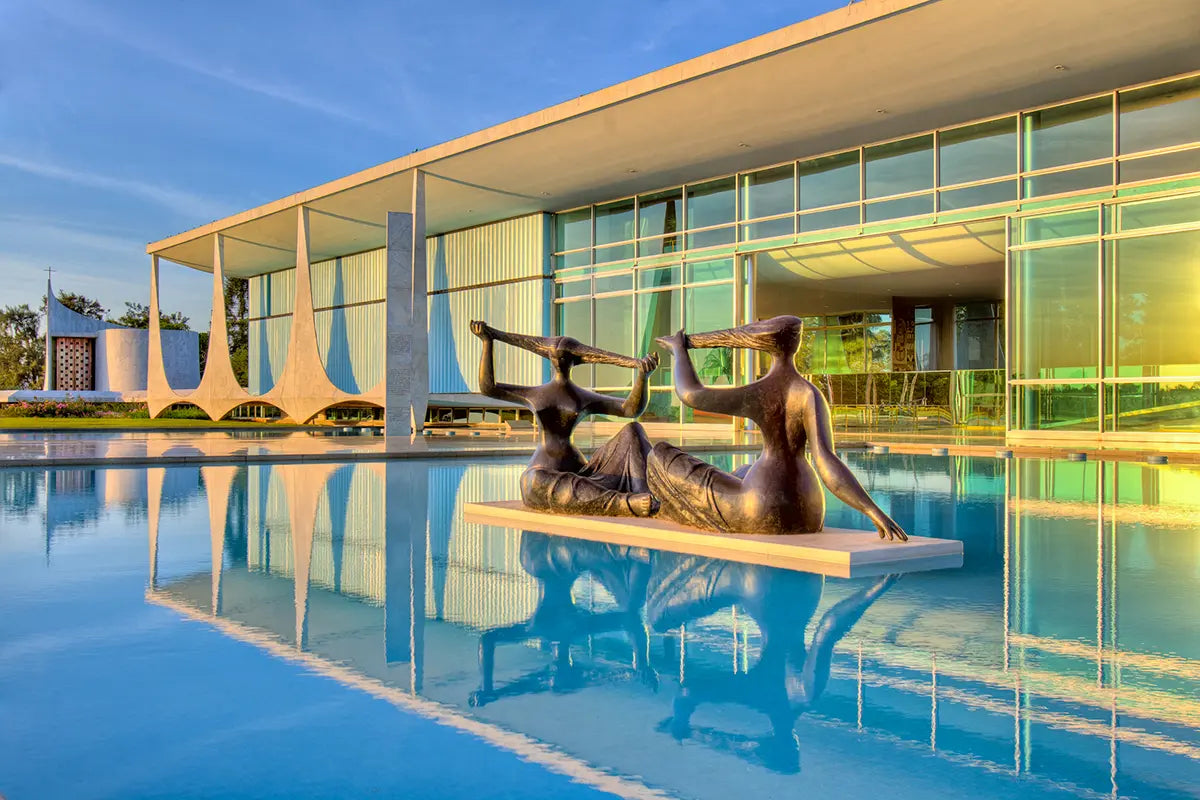
How Brazil developed into a Design Powerhouse
Brazilian design, much like its vibrant culture, is a captivating mosaic of diverse influences. It draws not only from its own rich indigenous heritage but also from the largest Japanese community outside Japan and the largest German-speaking community outside Europe. This confluence of cultures manifests in unique artistic expressions like capoeira, born from the creativity of Afro-Brazilians.
Due to an economy historically reliant on timber, minerals, coffee, and sugar, Brazil's manufacturing sector, and with it, its design scene, developed relatively late. However, this delay ultimately led to the emergence of a truly unique design aesthetic. Blending European and indigenous artisanal traditions, Brazilian crafts finally found their voice and established their distinct identity.
The two decades between the end of World War II and the start of the military dictatorship (1945–1964) were a time of extraordinary creative release in Brazil. The Europeans who fled to Brazil after the first and second world wars created and benefited from a unique climate of hope, experimentation, and economic growth. Artists like Tarsila do Amaral and Cândido Portinari, furniture designers like Joaquim Tenreiro and Martin Eisler, landscapers like Roberto Burle Marx and Mina Klabin, and of course architects like Sergio Rodrigues, Rogério Duarte, Lina Bo Bardi and Oscar Niemeyer became the chief protagonists of a uniquely Brazilian design culture.





What is Brasília, if not the dawn of a new day for Brazil?
The quintessential symbol and product of this period was the new capital, Brasília, a daring project designed to break free from the faded colonial grandeur of Rio de Janeiro and build from scratch a capital worthy of a nation looking to the future rather than the past. President Juscelino Kubitschek captured the prevailing mood of optimism when he said, “What is Brasília, if not the dawn of a new day for Brazil?” Though much credit is owed to the urban planner Lúcio Costa, it was Oscar Niemeyer’s sculptural ensemble of government buildings at its center, which sought to reflect, in the architect’s words, “the soft and sensuous curves of the mountains of my country, the winding curves of our rivers”, that would come to define Brasília. The construction of this uncompromisingly modern city 60 years ago seemed to prove that it was indeed possible to realize the utopian dream of 20th century architects, namely the reinvention of urbanity.

Brazilian Design today: Towards sustainability and dialogue
Following the “lost years” of military rule, Brazilians rediscovered their modernist heritage and reinfused it with a new playfulness, exemplified by Estudio Campana, which elevated common, even discarded, materials into classic pieces of furniture.
The Campana brothers also exemplified a new willingness among Brazilian designers to work across disciplines, having expanded from furniture to include, architecture, costume design, jewelry, fashion design and landscaping. In a statement that is both radical and tongue-in-cheek, The Campana’s Cangaço collection is crafted in the style of the intricate leather clothing of the 19th-century Cangaçeiros, roaming bandits that arose from among the exploited peasantry of Brazil’s northeast.

Young Brazilian designers, like their contemporaries elsewhere, are increasingly concerned with issues of sustainability. Precisely because it is renowned for its vulnerable ecosystems whose preservation is essential to planetary health, Brazil is perfectly placed to lead a more circular and economical approach to working with natural materials. Designers like Fernanda Marques, Rodrigo Almeida and Maria Fernanda Paes de Barro are leading the way, creating furniture, fashion, and objects that are both beautiful and environmentally conscious.





